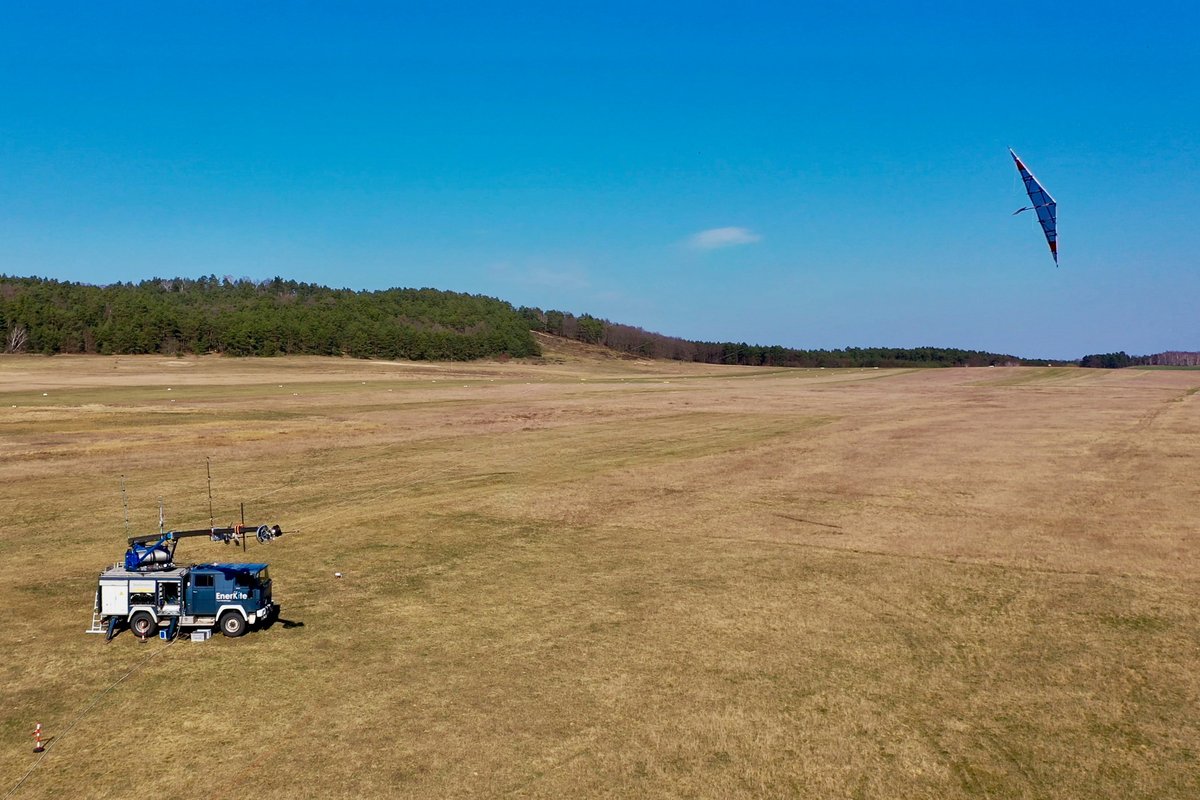Lightweight design at BTU Cottbus - Senftenberg makes wind turbines fly
EnerKíte, the pioneer for airborne wind turbines from Kleinmachnow in Brandenburg, wants to complete the first 100kW series prototype in 2022. To ensure that the kite, which is to produce twice as much energy as classic wind turbines, can be operated safely and efficiently, a team from BTU Cottbus - Senftenberg and Fraunhofer PYCO led by Prof. Holger Seidlitz is developing resilient lightweight components for controlling the turbine. The joint research project started at the beginning of April. Using artificial intelligence (AI), new design methods are being developed that can be transferred to other problems.
First scaling of EnerKíte technology
Airborne wind turbines can reliably produce electricity continuously by harnessing high-altitude winds. For example, the 100kW series prototype could permanently supply 200 households with green electricity. The turbines consist of only a kite, three ropes and a control container, saving 90 % of resources. Since high-altitude winds are available on 80 % of the land surface and the design will enable the cheapest electricity costs of all green energy sources in the future, airborne wind turbines can make a significant contribution to a globally successful energy transition.
By the end of 2022, the 100 kW series prototype EK200 SP will be realised in the joint project of BTU Cottbus - Senftenberg & EnerKíte "EKxM". Proof of scalability from 30 kW to 100 kW makes the subsequent step into the megawatt class plausible.
BTU Cottbus - Senftenberg supports with artificial intelligence
The Chair of Polymer-Based Lightweight Design (PbL) at the BTU Cottbus - Senftenberg is a leader in Germany in the depth of work on sustainable lightweight design solutions and is always in demand as a partner in development cooperation with companies, from innovative start-ups à la EnerKíte to corporations such as BMW or Rolls Royce. For the EnerKíte systems, Prof. Holger Seidlitz's team supports the development of light dynamic components of the mast and the winches as a research partner. "With the use of modern additive manufacturing processes and artificial intelligence, design methods are optimised to design complex lightweight structures quickly and precisely," explains Prof. Holger Seidlitz.
The multi-material design applied here is a fundamental part of the institute's research work and the knowledge gained contributes significantly to the further development and optimisation of internal competences in the field of "artificial intelligence". Furthermore, the basic models developed can be transferred to other and even unrelated problems and thus be used within future research tasks and industrial projects.
Made in Brandenburg & unmade in Brandenburg
In the cooperation, Alexander Bormann also relies on the expertise of Prof. Holger Seidlitz in the area of recycling the highly efficient materials: "We want to keep an eye on the entire life cycle of the plants. What good is it to save material if instead of one tonne of steel I end up having to recycle 100 kg of hazardous waste?"
The joint project "EKxM" is funded by the Investitionsbank des Landes Brandenburg (ILB) and the EU Structural Fund ERDF. Until the beginning of May, EnerKíte is also raising funds via a crowdfunding campaign, through which citizens can participate as part of venture capital financing. More than €700,000 has already been invested in the most successful business campaign to date on the FunderNation.de platform.
Kontakt
Polymerbasierter Leichtbau
T +49 (0) 355 69-2344
Holger.Seidlitz(at)B-TU.De



